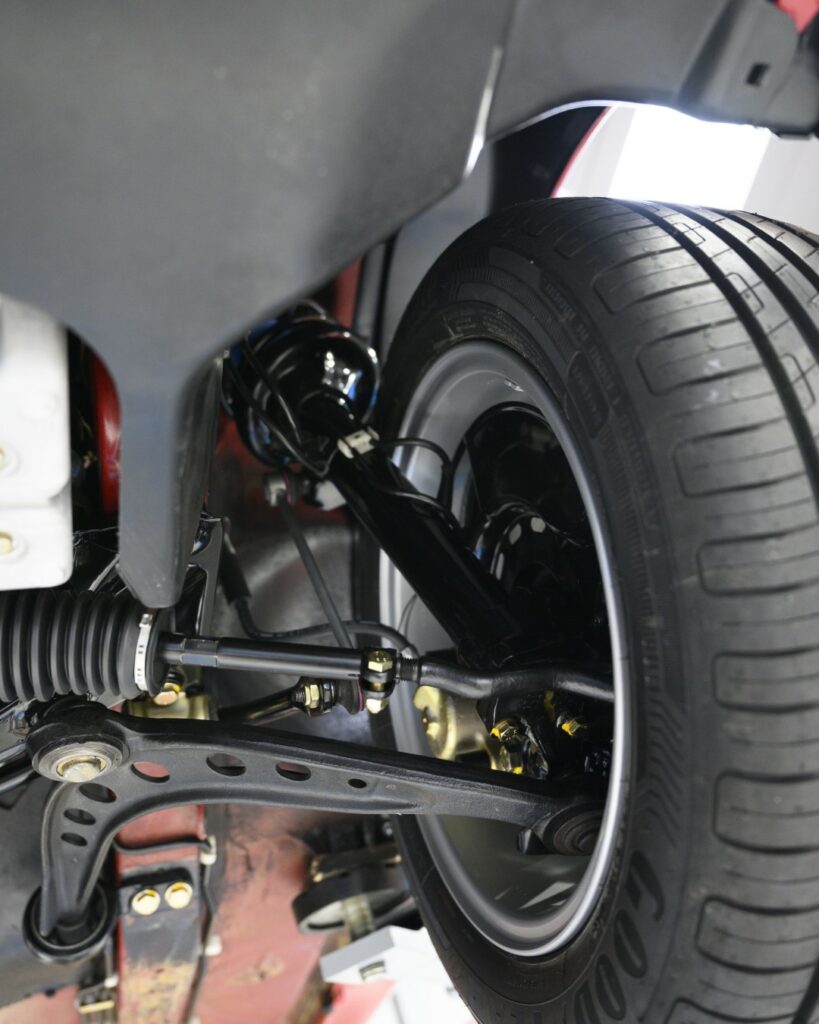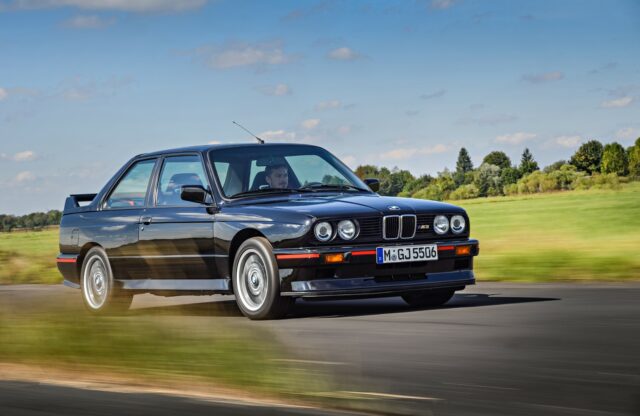The original BMW E30 M3 is a modern classic that retains much of the charm that made it so special upon its release 35 years ago. Now, as then, it is revered by enthusiasts for its communicative chassis and analogue, engaging driving experience. Its reputation is certainly justified, but as with any legend that gets exaggerated with each retelling, a little perspective is always valuable.
The E30’s 215bhp pales in comparison to the 21st century M3’s formidable 510bhp; driven back-to-back, the E30’s lack of accelerative force is a stark contrast. Yet although 215bhp wasn’t a particularly jaw-dropping figure even in the 1980s, with a mere 1200kg to push along the M3 was at least as fast in a straight line as its contemporary rivals. Low weight also pays dividends for dynamic abilities, and in that respect the original E30 remains as engaging and impressive as ever.
Delicate steering feel, pliant suspension and a forgiving chassis made the BMW a revelation to drive quickly. The overly sanitised steering system and rock-hard suspension settings of its modern-day equivalents remove a level of engagement that sheer speed cannot replace.
That said, the E30 M3 was created to meet the homologation requirements of the European Touring Car series, and the basic layout could clearly take much more power. While the final, road-legal, 2.5-litre Evos made 235bhp, the race-specification cars produced well north of 300bhp. It went on to become one of the most successful touring cars in motor sport history, but its legendary status was built around how ‘right’ the road cars felt from behind the wheel. Note that all E30 M3s were left-hand drive, although a few underwent aftermarket conversions.
The first variant was released with the S14 2.3-litre inline-four based on the M88, and later S38 straight-six engines. Special-edition variants made 212bhp (5bhp extra without catalytic converters); this motor was then used as standard from 1989-on.
As mentioned, the run-out models came with a slight boost to 2.5 litres and 235bhp – an impressive number for the day. All were equipped with a dogleg five-speed manual gearbox, and a convertible was offered a few years into production. With just under 18,000 variants produced, the E30 M3 was not as rare as other homologation specials, but years of low values have trimmed those figures significantly. Prices have soared northwards in recent times, so it’s all the more important to do your homework before investing in one of the best M cars BMW ever built.
ENGINE AND GEARBOX

The S14 engine is robust, but neglect and abuse can significantly shorten the lifespan of its components. Check the timing chains, because they require replacing every 100,000 miles, and the valves need adjusting every 30,000 miles.
Oil leaks can appear around the sump, and the head gasket and radiator fans can fail, causing overheating. If the car is suffering from a lumpy idle, check the intake manifold for damage.
European models all had a dogleg Getrag 265 gearbox, while cars sold in the US had a standard H-pattern transmission from the BMW E24 635i E24. Both variants came equipped with a limited-slip differential as standard. The E30’s gearbox is tough, but notchy changes can indicate worn-out synchros. These are expensive to replace, so be wary of this.
SUSPENSION AND BRAKES

Even the newest E30 M3 has now passed its 30th birthday, so inspect the bushes, shocks, control arms and tie-rod ends for wear. The car should feel planted and stable around corners; if it doesn’t, many of these components could require attention. The standard brakes are decent, but many owners have upgraded the pads and discs over the years. A squishy pedal can indicate a leaking master cylinder.
BODYWORK AND INTERIOR

Accident damage and rust are the two major things to look out for here. Despite the similarity to the standard 3-Series, few body panels were carried over – and they are therefore difficult to source. Check for overspray and misaligned panels to identify accident damage, and inspect the arches, window surrounds, sills and boot floor for corrosion.
The interior is typically hard wearing, and aside from retrimming seats there shouldn’t be much cause for concern. Air vents can become loose, but inserting a plastic washer in the mechanism resolves this. Dashboards can crack on the passenger side, although this shouldn’t happen if the car has been garaged.
The SII (service interval indicator) uses a small battery to retain its info. This can corrode and damage the back of the dash over time, so check to see if it has ever been replaced. Aftermarket head units are very common, as are upgraded speakers.
WHICH BMW E30 M3 TO BUY

While there is no such thing as a cheap E30 M3 any more, there are most definitely plenty of cars out there that don’t warrant their high asking prices. An otherwise pristinely presented example can often hide years of patchy servicing and questionable modifications.
Mileage can be high; remember that some examples were used as daily transport for years. With this in mind, the key thing to look for is a stack of servicing invoices, and any evidence of neglect and corrosion. Tracked cars are common – after all, that is what the M3 was built to do – but do check for signs of abuse and underbody damage.
A clean, standard model is a fantastic weekend toy, while the special-edition variants tend to command the highest prices. The differences generally amount to unique paintwork, signed plaques and some special trim, so there’s no harm in sticking to a standard model instead. The power figures grew incrementally over the years, but the actual performance difference is minimal, so try to focus on condition and history instead.
Convertibles were also offered, and these are generally less desirable than the coupés. US-specification models came with a conventional H-pattern gearbox sourced from the 325i and fitted with a shorter final drive. Even three decades after production ended, the original M3 is still regarded as the purest example of what an M car should represent. In that respect, it may never meet its match.
WHAT TO PAY

(1987 2.3-litre coupé, UK)
Fair: £38,700
Good: £52,300
Excellent: £75,300
Concours: £119,000
(1988 2.3-litre coupé, US)
Fair: $37,900
Good: $67,700
Excellent: $141,000
Concours: $217,000
SPECIFICATIONS

2.3-litre inline-four
Power: 215bhp
Top speed: 146mph
0-60mph: 6.5 seconds
Economy: 30mpg (est.)
2.5-litre inline-four
Power: 235bhp
Top speed: 152mph
0-60mph: 6.2 seconds (est.)
Economy: 30mpg (est.)
Credit goes to Fritz’s Bits BMW for the information in this article.




